How to properly plant and process potatoes with a walk-behind tractor
Growing potatoes is considered one of the most time-consuming types of agricultural work, even when it comes to a small vegetable garden on a personal plot. And if the size of potato plantations is 10-15 hectare, then one cannot do without small-scale mechanization. The most popular device that can facilitate the work of a potato grower is today a walk-behind tractor. We will consider in more detail how potatoes are planted using a walk-behind tractor.
What is a walk-behind tractor?
A walk-behind tractor is a self-propelled mechanical device with which you can automate the entire process of growing potatoes.
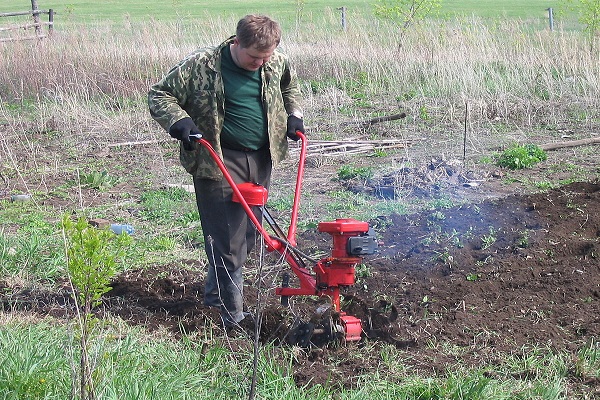
It is a unit consisting of the following main components:
- internal combustion engine;
- transmissions;
- a running gear consisting of an axle and two wheels;
- handle with which control is carried out.
In order for the walk-behind tractor to be able to perform this or that work, additional equipment is hung on it.
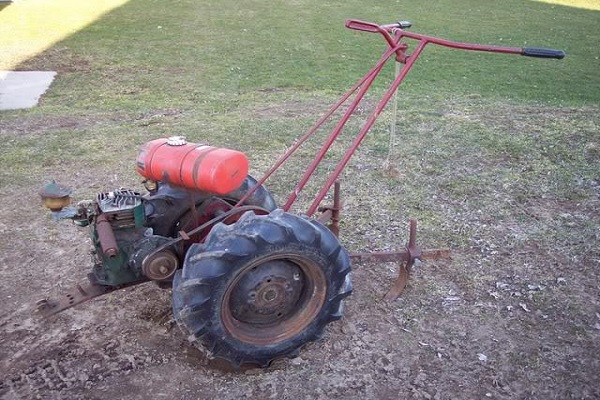
How is potatoes planted with a walk-behind tractor?
To plant potatoes with a walk-behind tractor, first the land must be plowed and hardened. For these works, a plow or a special cutter is used. Next, planting is carried out, for which a potato planter is used, and then it can be replaced with a hiller, which covers the furrow with earth.
With the subsequent care of the crops, a hiller (hilling) and a flat cutter (weeding between rows) are used. One more attachment is intended for harvesting - a plower.
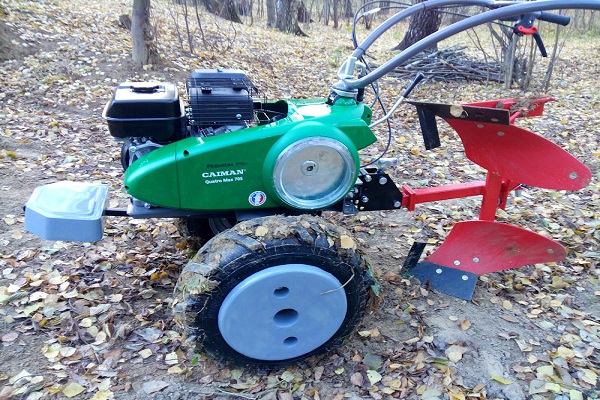
Field plowing equipment
The modern park of mini tractors has about two dozen devices, domestic and imported, differing in functionality, power, price. Let's consider the most popular ones.
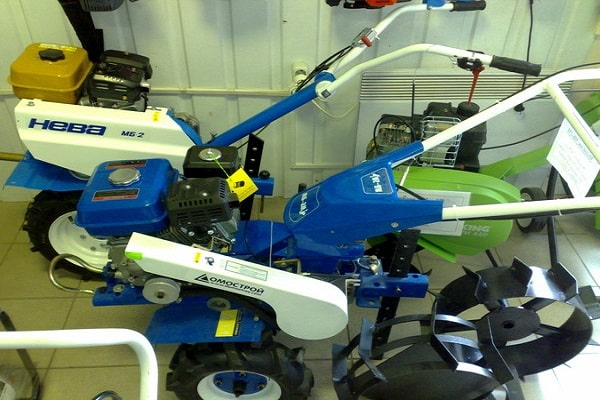
Motoblock "Neva"
Domestic unit from a well-known manufacturer for summer residents - the Krasny Oktyabr plant. It is a powerful device that can work on any soil.
Among the advantages:
- ease of use;
- reliable motor with high efficiency;
- durable body, preventing damage to the mechanism;
- the ability to work with attachments designed for a wide range of jobs.
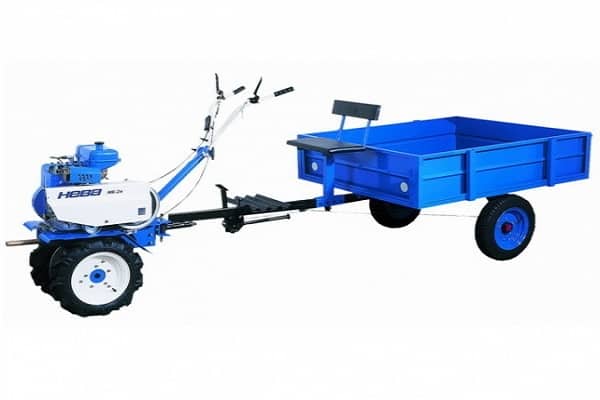
In addition, this type of motoblocks provides the user with ample opportunities to choose the optimal speed and comfortable handle position. At the same time, according to gardeners' reviews, "Neva" has not proved itself very well in the mode of working with a plow (shallow plowing depth).
The disadvantages can be considered high weight (more than 90 kg), insufficient stability on uneven soil, high cost.
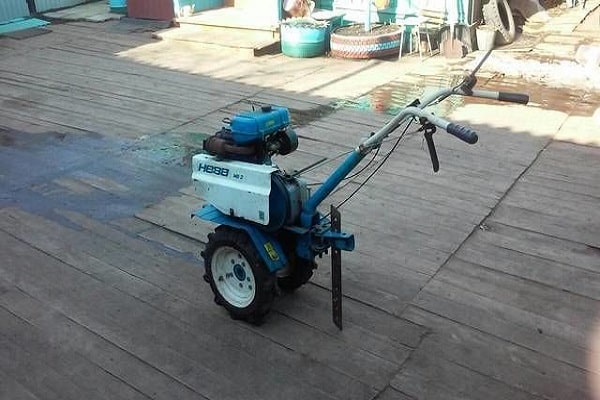
Motoblock "Salute"
The author of this device, the Salut association (Moscow), did everything to make it as convenient as possible in operation. Its center of gravity is lowered and the engine is moved forward, which makes it easier to control than the Neva and is able to easily maintain balance when connecting the plow.
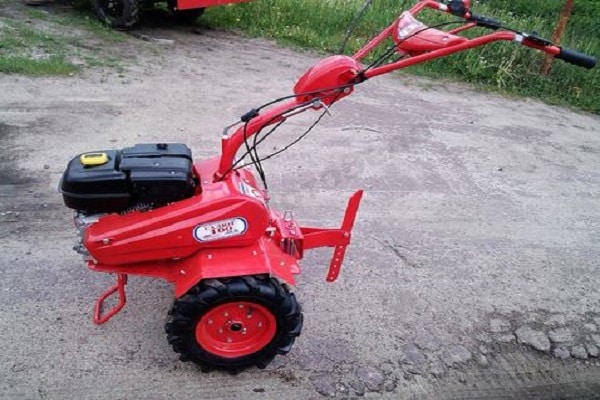
Another advantage is its low weight and maneuverability, which allows the Salyut to be used in small areas. It should also be noted that the handles of the walk-behind tractor are narrowed and can be rotated 180 °, which makes it very convenient for harvesting.
A significant drawback is the lack of a differential, which makes it difficult to turn and makes it inconvenient to use the bogie. In addition, some varieties of "Salut" are characterized by high noise levels.
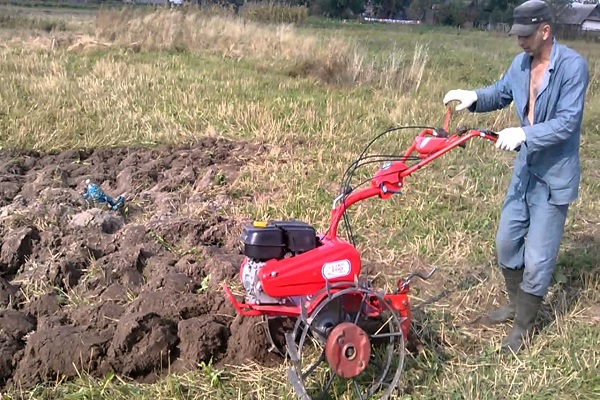
Motoblock "MTZ"
The brainchild of the Minsk Tractor Plant attracts with its compactness and maneuverability. Despite its high weight, the device is perfectly balanced and therefore extremely stable.
The latest modification - MT3 09N will become a universal assistant for the gardener, and if you purchase an additional adapter with a seat, the walk-behind tractor can be turned into a mini-tractor. Among other advantages - wide functionality, large fuel tank volume, high power.
It should be remembered that MTZ is more intended for processing large areas; it is unprofitable to use it in small areas. In addition, the unit is picky about the choice of soil: it is not recommended to use it on heavy soils.
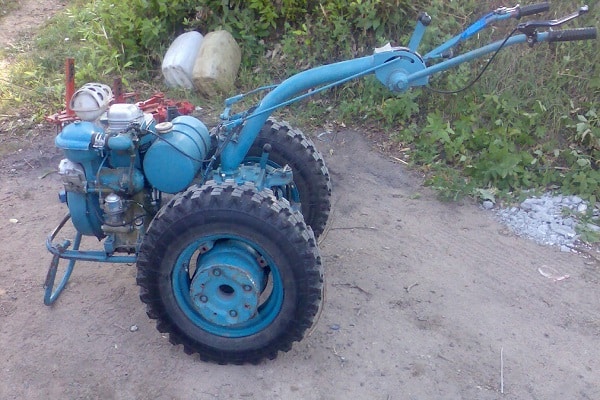
Planting methods
Depending on the type of attachment, there are three ways of planting potatoes using a walk-behind tractor. When choosing one of them, the size of the site, the functionality of one or another device, as well as its cost are taken into account. Let's consider each of the options.
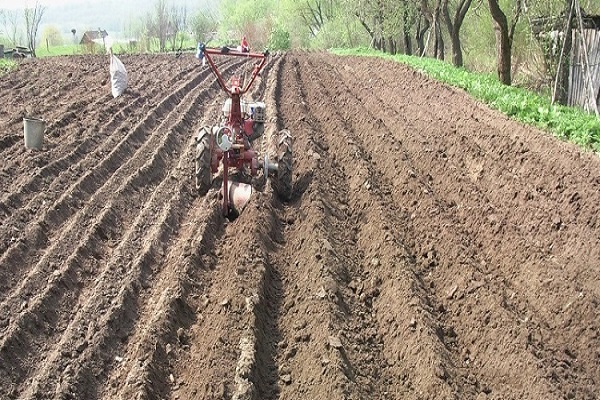
Working with a hiller
A hiller is an agricultural tool designed for further processing of already dug up land. In our case, the hiller is used to fill the furrow in which the potatoes are already laid.
At the first stage, metal wheels are placed on the walk-behind tractor, creating furrows, and a hopper with a distributor, from which, when moving, the potatoes fall into the furrow. At the second stage, metal wheels are replaced with rubber ones, and a hiller is placed instead of a hopper, which covers the potatoes with soil and slightly compresses it. Consider working with different types of hillers.
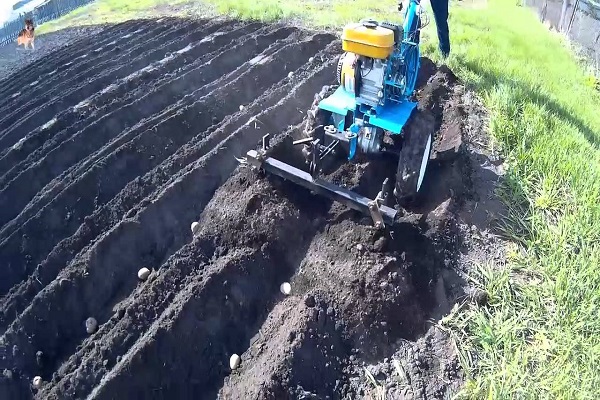
Diskovym
The disc hiller, consisting of a T-shaped stand, on which two disc-shaped working elements are movably fixed, is more convenient and easy to use. Since it changes not only the distance between the working elements, but also the angle of their inclination, it is possible to use it to obtain ridges of a given configuration.
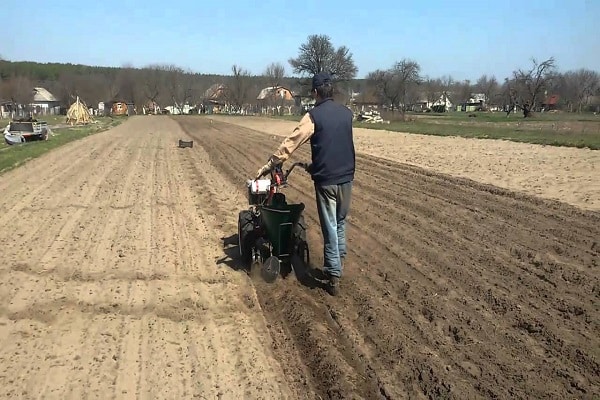
Fixed working width
Hillers with a fixed working width are unable to independently adjust the distance between the wings, since the working elements are rigidly fixed to the rack. They are usually used for small, lightweight motoblocks when processing narrow row spacings of the same width.
It is important to remember: this type of hillers has insufficiently strong stands, so they cannot be used on hard soils.
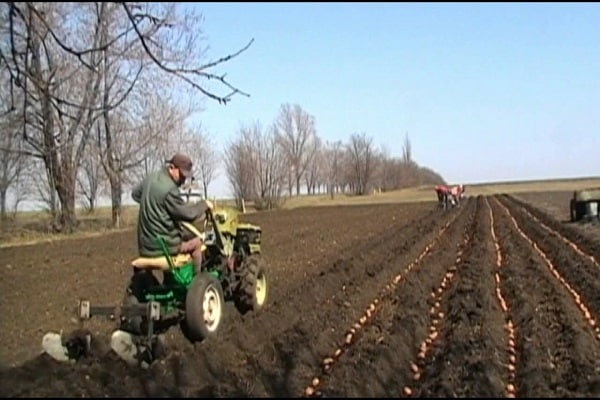
With adjustable working width
Hillers with adjustable working width, in which the working elements are fixed movably, due to which the distance between them can change.You can use this type of hiller on beds of different widths, it is intended for walk-behind tractors with a capacity of more than 3.5 liters. from.
The disadvantage of this type of hiller is a large amount of fuel consumed.
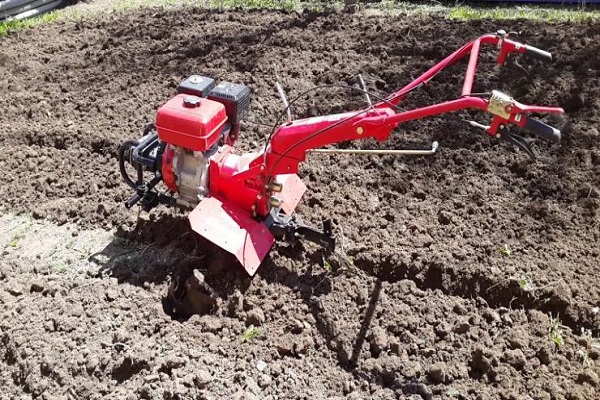
Application of a two-row hiller
A two-row hiller consists of two hillers located on one stand and allows you to process two rows at once, significantly saving time and fuel reserves. Working with it is more difficult and requires a lot of experience.

Landing under the plow
A plow is a simple device designed for plowing the land. When planting under a plow, the top layer of the soil is preliminarily loosened with a mill, after which the plow fixed on the walk-behind tractor is introduced to the depth of the shovel bayonet into the soil. Each row is traversed twice: during the first pass, a furrow is created in which the seed potatoes are laid, during the second pass, an adjacent furrow is formed, and the first, already sown soil, is covered with the excavated soil.
Among the advantages of the method is a high landing speed. Of the shortcomings, the most important are the difficulty of working with a plow and the impossibility of planting potatoes with long (more than 5 mm) sprouts.
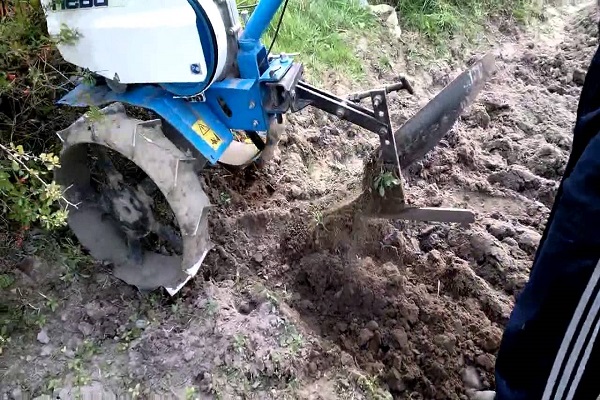
Planting a mounted potato planter
The potato planter is a hopper equipped with a belt mechanism that regulates the supply of planting material. Its use allows planting in record time, since a furrow is created in one pass, for which the device is equipped with a plow, filled with potatoes at regular intervals, and filled with a hiller located behind the bunker.
Nevertheless, this planting method also has its drawbacks: in particular, these are high requirements for planting potatoes: they should be approximately the same medium size with small sprouts.
The high cost of work can also be considered a disadvantage.
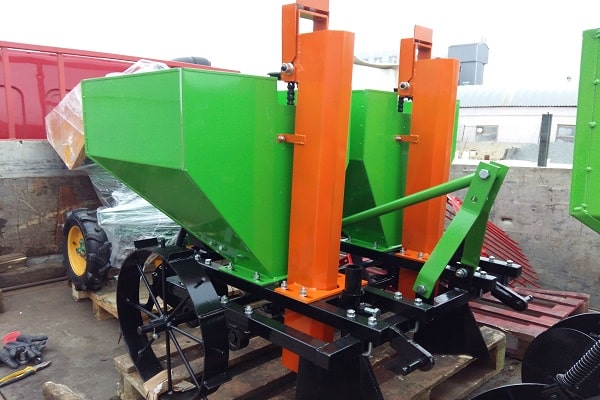
The working process
Before how to plant potatoes, it should be remembered that there are certain rules regarding the marking of the garden, preparing the soil and equipment for work, cutting furrows and beds. Without their observance, the use of a walk-behind tractor will be ineffective, so we will dwell on these issues in more detail.
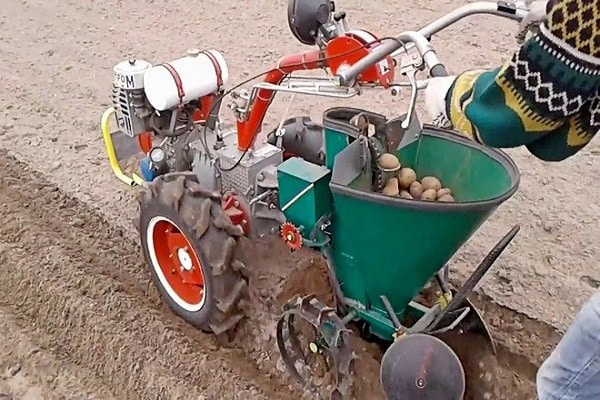
Garden layout
The layout of the garden is reduced to determining the location of the holes for planting. For the successful operation of the walk-behind tractor, the furrows must be parallel and be at a distance of 55–65 cm from each other. Marking can be done using a homemade T-shaped marker with three pegs screwed to it at a distance of 65 cm.
Soil preparation for potatoes
Soil preparation for potatoes begins with choosing a site with sandy or sandy loam soil and applying fertilizers in advance. This should be done in the fall, after the harvest. In the spring, before sowing, the soil is plowed to the depth of the shovel bayonet, for which you can use the "cutter" attachment.
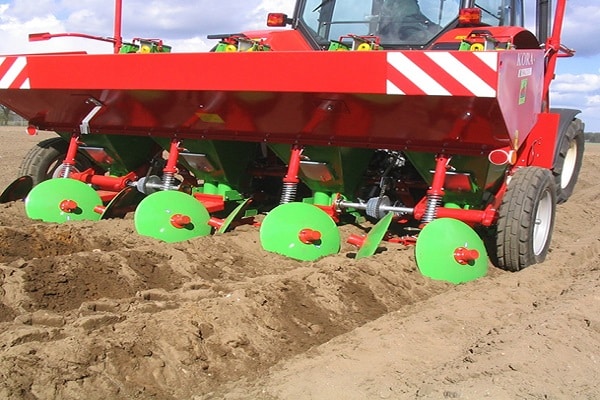
Cutting furrows
Furrowing is done with any kind of hiller or plow. For late and mid-season varieties, planting is carried out in 35 cm increments, for early varieties this parameter is 50 cm.The row spacing is 60 cm.
Cutting the beds
Cutting the beds begins with determining the position of the first one. A hiller is placed on the walk-behind tractor, its working surfaces are located strictly in the center. When the first bed is cut, the walk-behind tractor is rearranged so that the wheel now the right (left) wheel moves along the track previously left by the left (right) wheel.
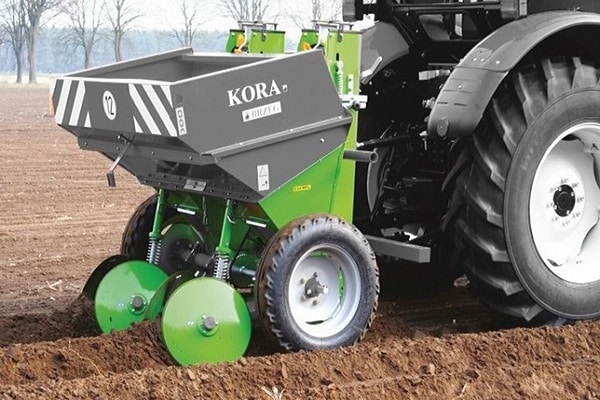
Planting depth
Planting depth depends on the characteristics of the soil and the size of the seed. Planting medium-sized potatoes in sandy and sandy loam soils is carried out in a furrow to a depth of 10 cm.
For loams, the depth is 5–6 cm. For other types of soil, deep planting is used - over 10 cm. The finer the planting material, the shallower the planting depth.
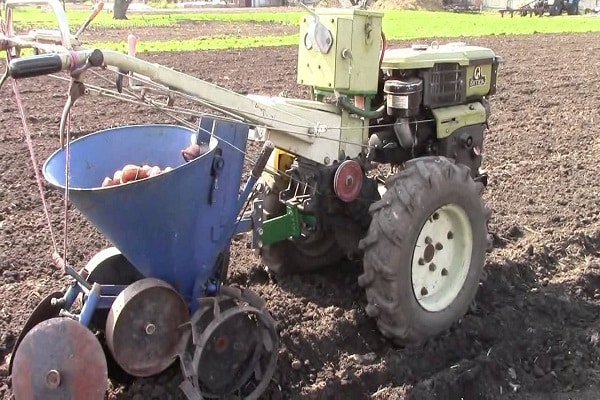
Correct seeding pattern
The correct seeding scheme when using a walk-behind tractor assumes that the row spacing is 60 cm, the distance between the holes is 35 cm (when late and mid-season varieties are planted).
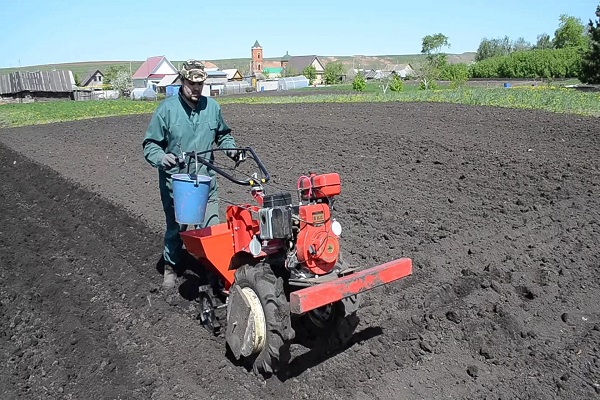
How to check readiness?
Preparation of equipment and checking the performance of the walk-behind tractor is reduced to the following steps:
- Checking the oil level and fuel level in the system.
- Unlocking the levers that control the wheel drives.
- Opening the fuel supply valve.
- Switching on the ignition.
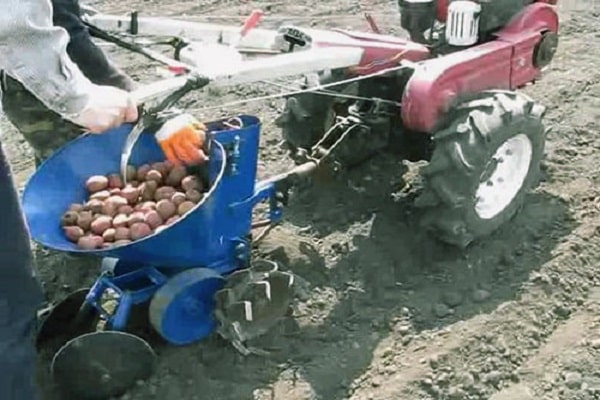
Completing of the work
After checking the walk-behind tractor, it remains only to start the engine. To do this, pull the starter rope sharply.
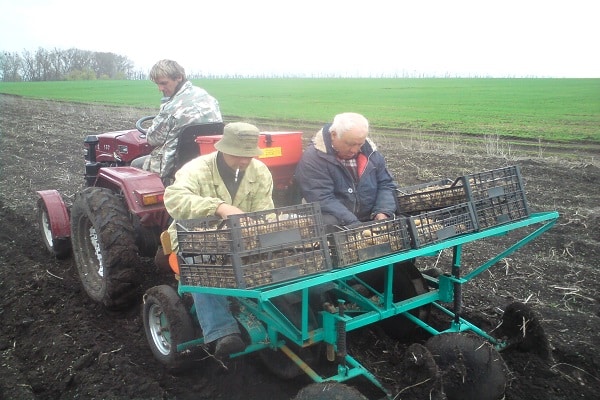
Crop care
Motoblock and various attachments will facilitate further potato plantation care.
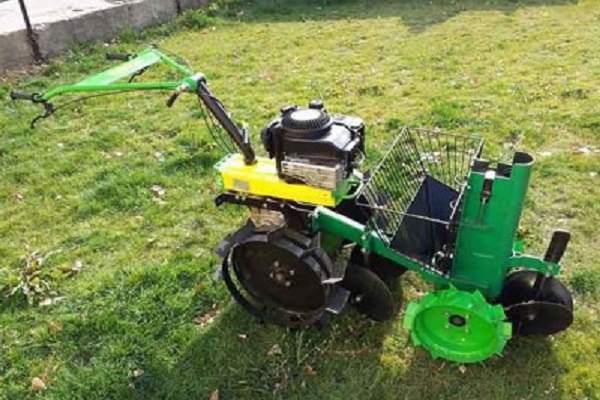
Post-germination processing
The time from planting to the first shoots of potatoes is the most important for the formation of full and healthy tubers. Germination will start from the upper eyes. The main thing that should not be allowed is breaking off the sprouted branches. This will adversely affect the growth and development of potato fruits.

The role of the plow
After the appearance of the first shoots, a weeding machine is used for weeding and loosening the soil in the aisles. It performs the tasks of a conventional plow.
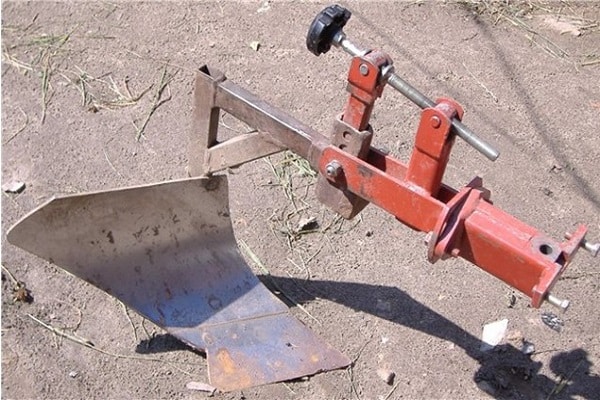
Hilling
Accelerates the development of stems, destroys weeds and protects the plant from possible frost. It is performed 2-3 weeks after germination. A hiller is used for work.

Spraying with a walk-behind tractor
It can be done using a special sprayer, which is equipped with a pump.
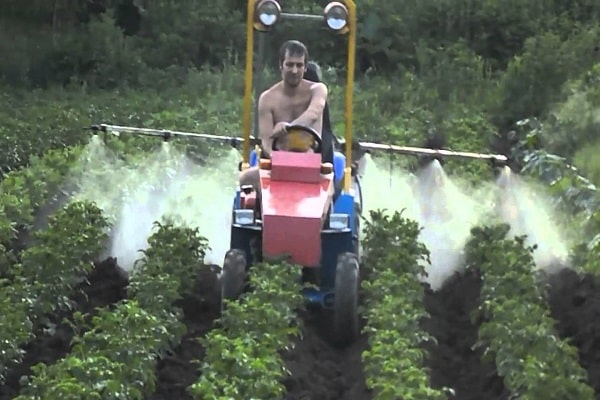
Weeding harrow
To remove weeds after sowing, but before the first shoots appear, a mesh harrow is used for weeding, which is fixed on the frame of the walk-behind tractor and pulled across the field.
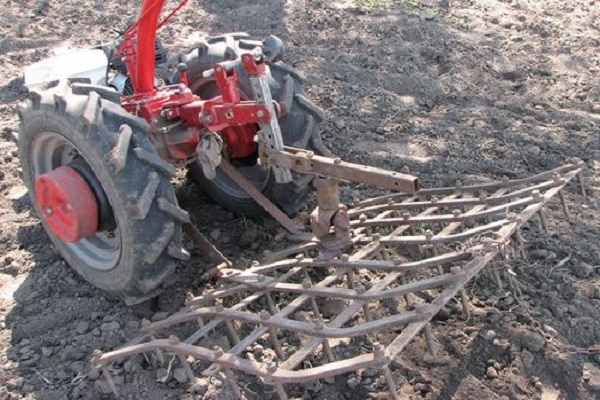
Cleaning potatoes with a walk-behind tractor
Harvesting is even more laborious than planting potatoes. But here, too, a walk-behind tractor will come to the rescue of the gardener: you just need to supplement it with a device called a potato digger.
There are both simple and complex models equipped with a screen or conveyor belt that are used on high-power walk-behind tractors. When choosing a potato digger, you should take into account the capabilities of your walk-behind tractor and the intensity of the load on it.
The purchase and maintenance of a walk-behind tractor with attachments will require certain costs, but it will facilitate the cultivation of potatoes, simplify all the necessary operations, from soil preparation to harvesting. Should you buy it? The choice is yours!
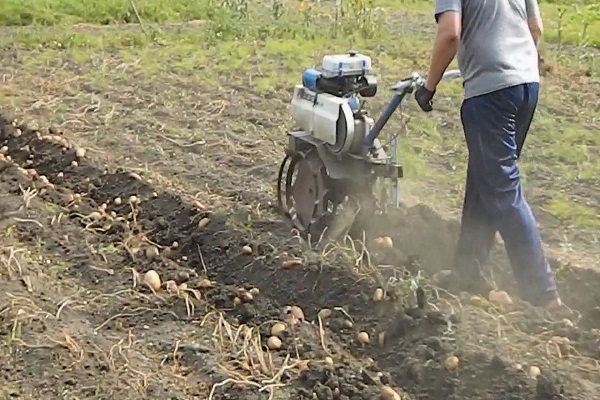

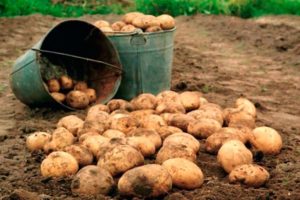
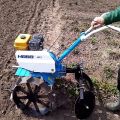

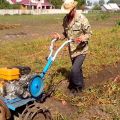
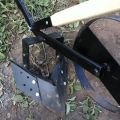


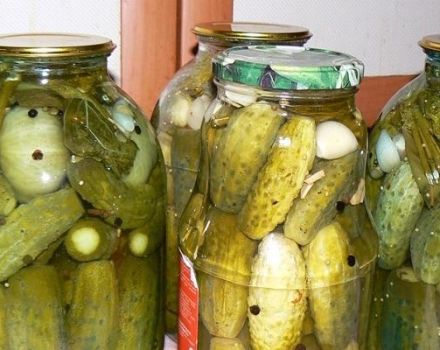

There is little rule on how to plant, it is necessary that the land is still good, it is desirable to fertilize it, and if you also water it properly, then the result in the fall will generally greatly please, this is a fact, based on this I recommend a bioactivator of plant growth BioGrow.